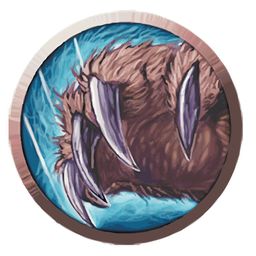查询所有
db.getCollection('order').find()
查询 customerId=1 的记录
db.getCollection('order').find({"customerId":1})
查询 customerId=1 的记录,按 userId 降序排序
db.getCollection('order').find({"customerId":1}).sort({"userId":-1})
按 userId 分组
db.getCollection('order').aggregate([
{$group:{_id:"$userId",count:{"$sum":1}}}
])
/* 1 */
{
"_id" : 6,
"count" : 2.0
}
/* 2 */
{
"_id" : 5,
"count" : 2.0
}
/* 3 */
{
"_id" : 2,
"count" : 4.0
}
/* 4 */
{
"_id" : 1,
"count" : 3.0
}
/* 5 */
{
"_id" : 3,
"count" : 2.0
}
/* 6 */
{
"_id" : 4,
"count" : 2.0
}
使用 java driver
public void groupByUserId() {
MongoCollection<Document> col = mongoClient.getDatabase(database).getCollection(collection);
MongoCursor<Document> cursor = col.aggregate(Lists.newArrayList(
group("$userId", sum("count", new BsonInt32(1)))
)).iterator();
while (cursor.hasNext()) {
Document document = cursor.next();
System.out.println(new Gson().toJson(document));
}
}
{"_id":6,"count":2}
{"_id":5,"count":2}
{"_id":2,"count":4}
{"_id":1,"count":3}
{"_id":3,"count":2}
{"_id":4,"count":2}
按多个字段分组
db.getCollection('order').aggregate([
{$group:{_id:{customerId:"$customerId",userId:"$userId"},count:{"$sum":1}}}
])
/* 1 */
{
"_id" : {
"customerId" : 4,
"userId" : 4
},
"count" : 1.0
}
/* 2 */
{
"_id" : {
"customerId" : 3,
"userId" : 2
},
"count" : 1.0
}
/* 3 */
{
"_id" : {
"customerId" : 2,
"userId" : 1
},
"count" : 1.0
}
/* 4 */
{
"_id" : {
"customerId" : 1,
"userId" : 6
},
"count" : 2.0
}
/* 5 */
{
"_id" : {
"customerId" : 1,
"userId" : 2
},
"count" : 3.0
}
/* 6 */
{
"_id" : {
"customerId" : 1,
"userId" : 5
},
"count" : 2.0
}
/* 7 */
{
"_id" : {
"customerId" : 1,
"userId" : 1
},
"count" : 2.0
}
/* 8 */
{
"_id" : {
"customerId" : 1,
"userId" : 3
},
"count" : 2.0
}
/* 9 */
{
"_id" : {
"customerId" : 1,
"userId" : 4
},
"count" : 1.0
}
使用 java driver
public void groupByCustomerAndUser() {
MongoCollection<Document> col = mongoClient.getDatabase(database).getCollection(collection);
MongoCursor<Document> cursor = col.aggregate(Lists.newArrayList(
group(new BasicDBObject("customerId", "$customerId").append("userId", "$userId"), sum("count", new BsonInt32(1)))
)).iterator();
while (cursor.hasNext()) {
Document document = cursor.next();
System.out.println(new Gson().toJson(document));
}
}
{"_id":{"customerId":4,"userId":4},"count":1}
{"_id":{"customerId":3,"userId":2},"count":1}
{"_id":{"customerId":2,"userId":1},"count":1}
{"_id":{"customerId":1,"userId":6},"count":2}
{"_id":{"customerId":1,"userId":2},"count":3}
{"_id":{"customerId":1,"userId":5},"count":2}
{"_id":{"customerId":1,"userId":1},"count":2}
{"_id":{"customerId":1,"userId":3},"count":2}
{"_id":{"customerId":1,"userId":4},"count":1}
使用 pipeline ,组合多个操作,按用户去重,查询客户id为1的订单数量
db.getCollection('order').aggregate([
{$match:{"customerId": 1}},
{$group:{_id:{customerId:"$customerId",userId:"$userId"}}},
{$group:{_id:"$_id.customerId",count:{"$sum":1}}}
])
/* 1 */
{
"_id" : 1,
"count" : 6.0
}
使用 java driver
public void findByCustomerDistinctByUser(Integer customerId) {
MongoCollection<Document> col = mongoClient.getDatabase(database).getCollection(collection);
MongoCursor<Document> cursor = col.aggregate(Lists.newArrayList(
match(eq("customerId", customerId)),
group(new BasicDBObject("customerId", "$customerId").append("userId", "$userId"), sum("count", new BsonInt32(1))),
group("$_id.customerId", sum("count", new BsonInt32(1)))
)).iterator();
while (cursor.hasNext()) {
Document document = cursor.next();
System.out.println(new Gson().toJson(document));
}
}
{"_id":1,"count":6}
也可以将查询语句转成 bson 对象,这样写
public void findByCustomerDistinctByUser1() {
MongoCollection<Document> col = mongoClient.getDatabase(database).getCollection(collection);
String query1 = "{$match:{\"customerId\": 1}}";
String query2 = "{$group:{_id:{customerId:\"$customerId\",userId:\"$userId\"}}}";
String query3 = "{$group:{_id:\"$_id.customerId\",count:{\"$sum\":1}}}";
Bson bson1 = (Bson) JSON.parse(query1);
Bson bson2 = (Bson) JSON.parse(query2);
Bson bson3 = (Bson) JSON.parse(query3);
MongoCursor<Document> cursor = col.aggregate(Lists.newArrayList(bson1, bson2, bson3)).iterator();
while (cursor.hasNext()) {
Document document = cursor.next();
System.out.println(new Gson().toJson(document));
}
}
小数据量分页使用 skip() 和 limit()
MongoCursor<Document> cursor = col.find()
.skip(page * pageSize)
.limit(pageSize)
.iterator();
简单,但是数据量大时有效率问题。因为会把所有记录查出来,从头变例,并且无法使用索引。
大数据量
MongoCursor<Document> cursor = col.find(gt("_id", new ObjectId(head)))
.batchSize(batchSize).limit(limit).iterator();
效率高,但是必须回传当前页的最后一条记录的 id,同理上一页,需要回传当前页的第一条记录id,find 条件需要改成 lt() 。还有一个缺点是不能跳页。
